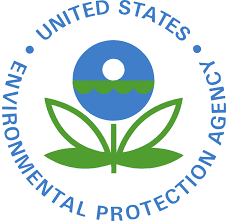St. Tammany’s Cane Bayou Mitigation Bank
A mitigation bank is a great way to manage land and improve local economic development and enhance livability of communities. St. Tammany Parish is tapping into this process calling it the Bayou Mitigation Bank.
 What is a mitigation bank? According to the EPA (United States Environmental Protection Agency), “A mitigation bank is a wetland, stream, or other aquatic resource area that has been restored, established, enhanced, or (in certain circumstances) preserved for the purpose of providing compensation for unavoidable impacts to aquatic resources permitted under Section 404 or a similar state or local wetland regulation.” Basically when a local government agency makes a “formal agreement” with a regulatory agency which is an independent governmental commission created by a legislative act.
What is a mitigation bank? According to the EPA (United States Environmental Protection Agency), “A mitigation bank is a wetland, stream, or other aquatic resource area that has been restored, established, enhanced, or (in certain circumstances) preserved for the purpose of providing compensation for unavoidable impacts to aquatic resources permitted under Section 404 or a similar state or local wetland regulation.” Basically when a local government agency makes a “formal agreement” with a regulatory agency which is an independent governmental commission created by a legislative act.
This regulatory agency will set standards for the mitigation bank. There are four things to follow with a mitigation bank. First, the bank site which is the physical restored, preserved, enhanced and established land. The second is the bank instrument which is the agreement between those that are taking liability and the regulators. The third is the Interagency Review Team (IRT) that is a team which will supply regulatory review, approval, and oversight of the bank. Last is the service area with is defined as the geographic area where the permitted impacts will be compensated for at a given bank.
A mitigation bank has a number of advantages for those that seek to create one. Number one, they support and bind that the compensatory mitigation will definitely offset project impacts. They will readily make available financial resources, planning, and scientific expertise. Not only due they help financially but they also reduce permit processing times.
St. Tammany Parish President Pat Brister announced that th e St. Tammany Parish government has been granted permission to use a tract of wooded land that is close to 1,200 acres in Mandeville as a mitigation bank. This means that the parish will save money because they will not have to purchase high price wetlands mitigation credits from private owners.
e St. Tammany Parish government has been granted permission to use a tract of wooded land that is close to 1,200 acres in Mandeville as a mitigation bank. This means that the parish will save money because they will not have to purchase high price wetlands mitigation credits from private owners.
The Cane Bayou Mitigation Bank will produce 700 acres of wetlands mitigation credits. With a growing population which will hit to the third in the state in 2020, these available mitigation credits will reduce the cost of the growing parish infrastructure.
The current ratio in St. Tammany is 2.7:1 which means the developers are allowed to purchase 2.7 acres of credits for each acre of wetlands impacted by the project. Since St. Tammany Parish’s wetlands cover half of the parish’s 850 square miles many do not want to develop in the area because of the high impact of wetlands. Brister stated that credits in private land banks can cost up to $50,000 per acre.
“This will allow us to meet the parish’s needs in a very cost-effective way,” she said.
Click Here for source information.

